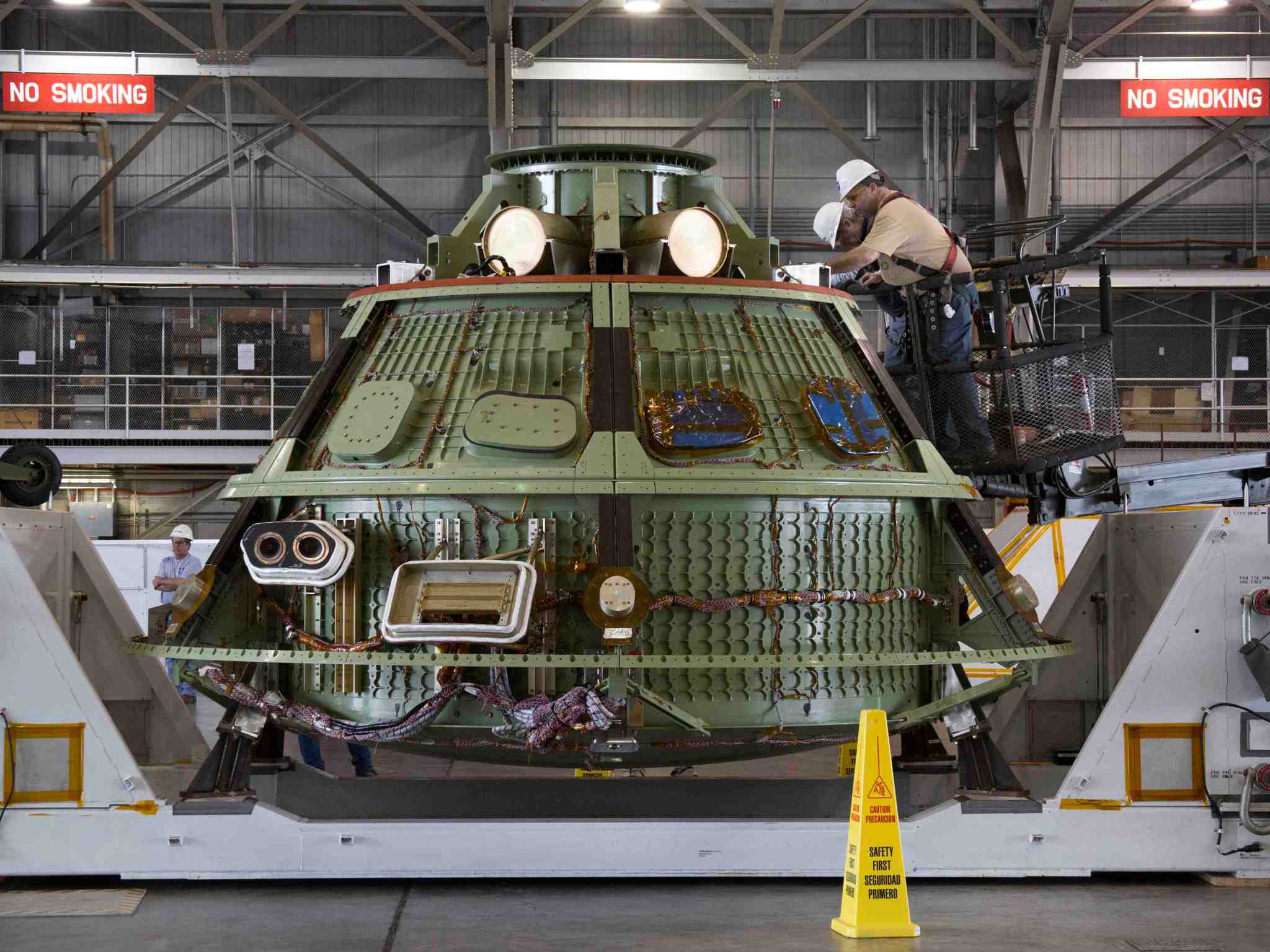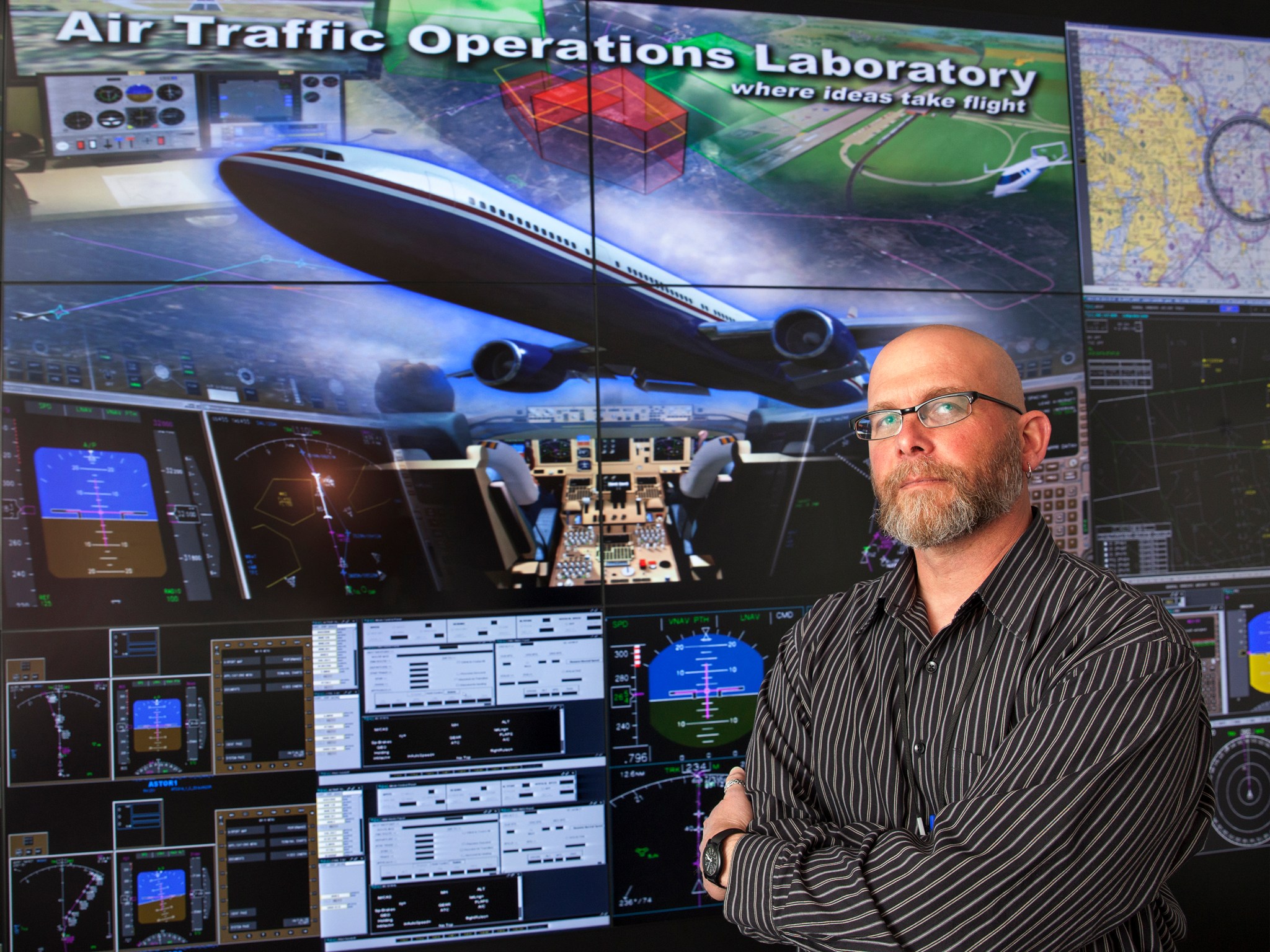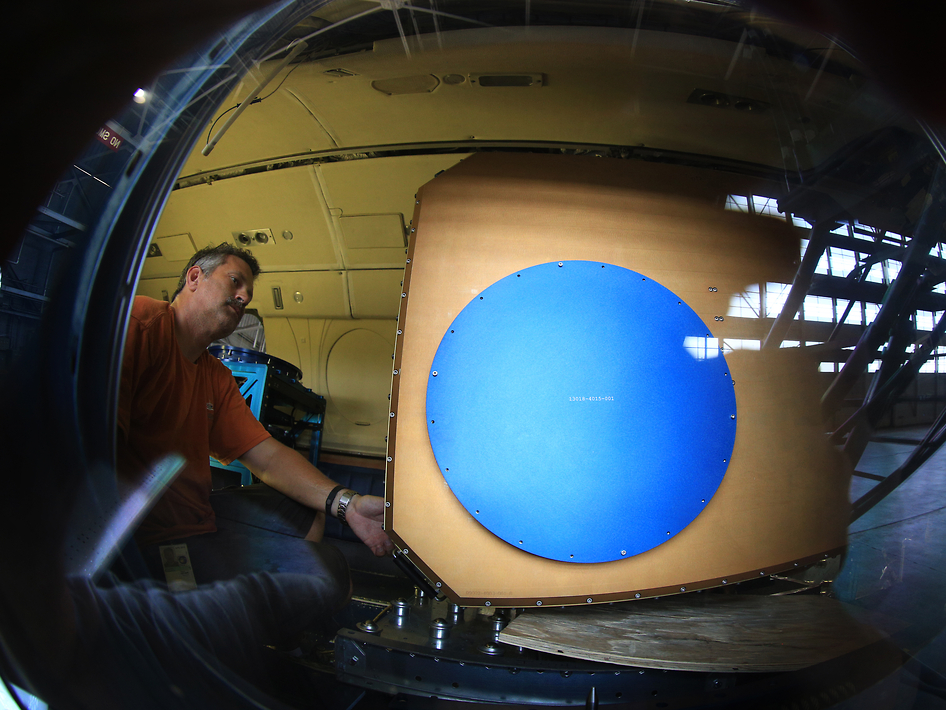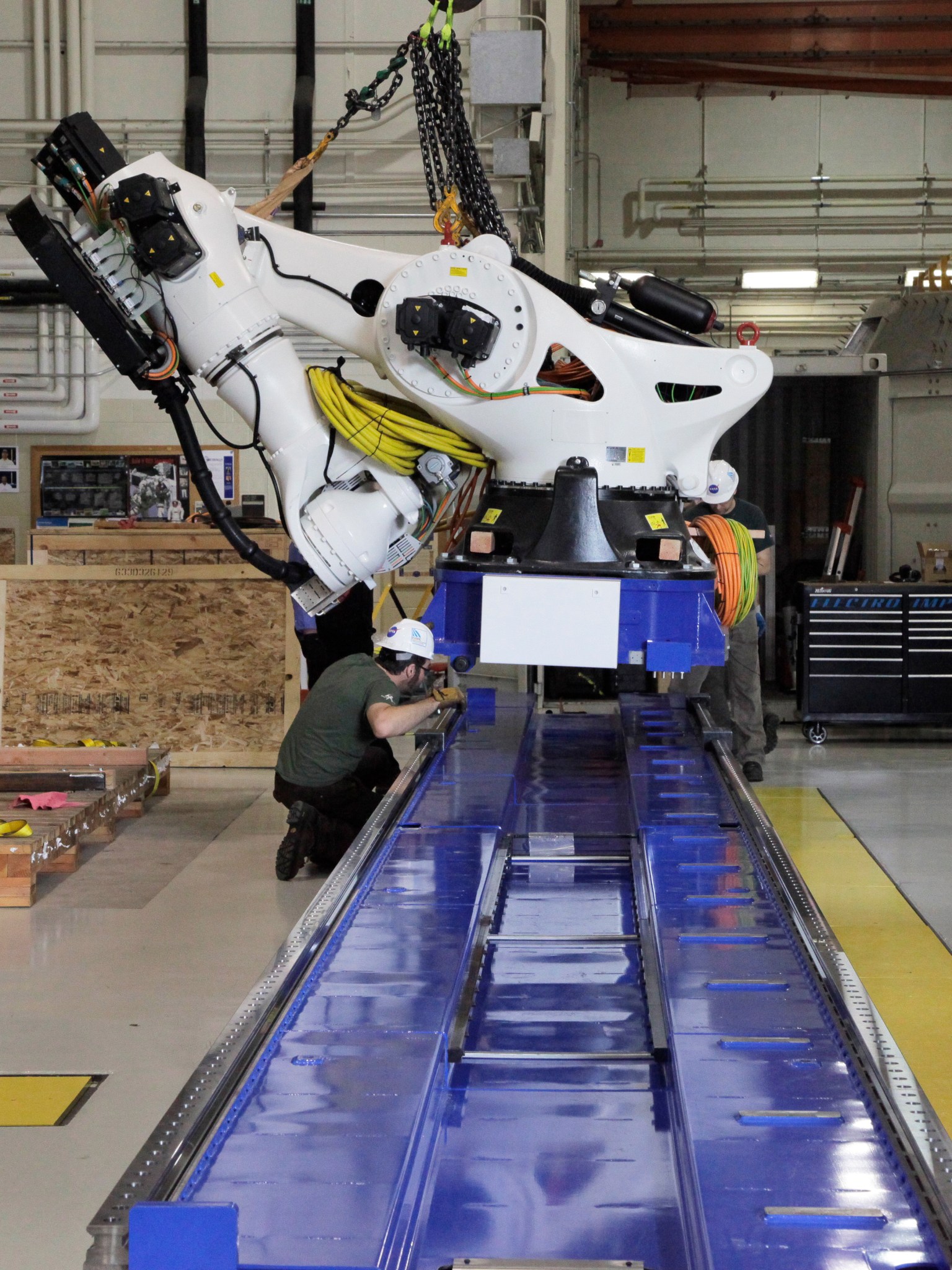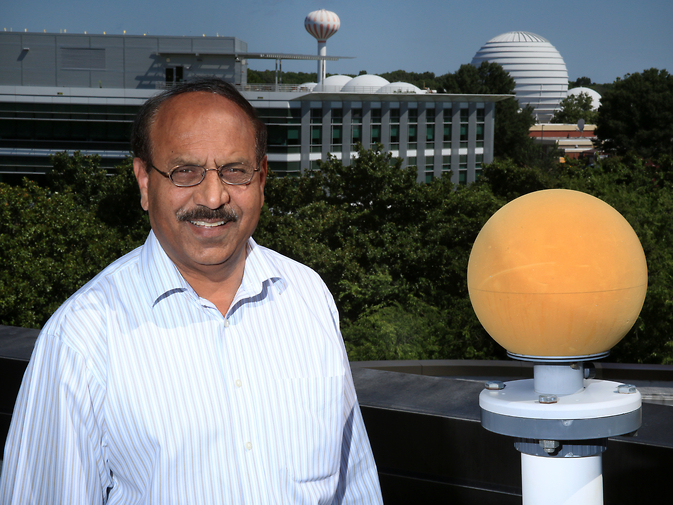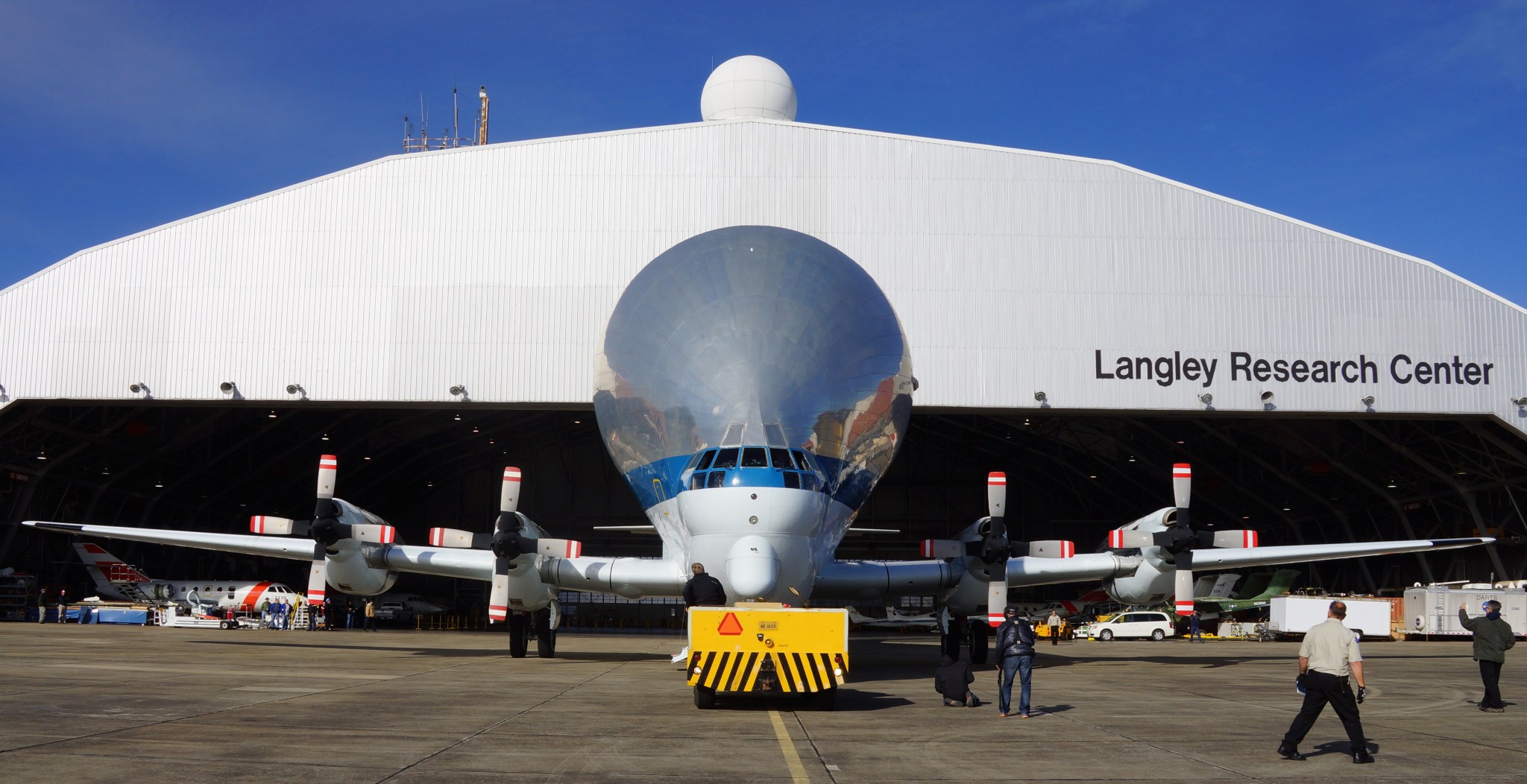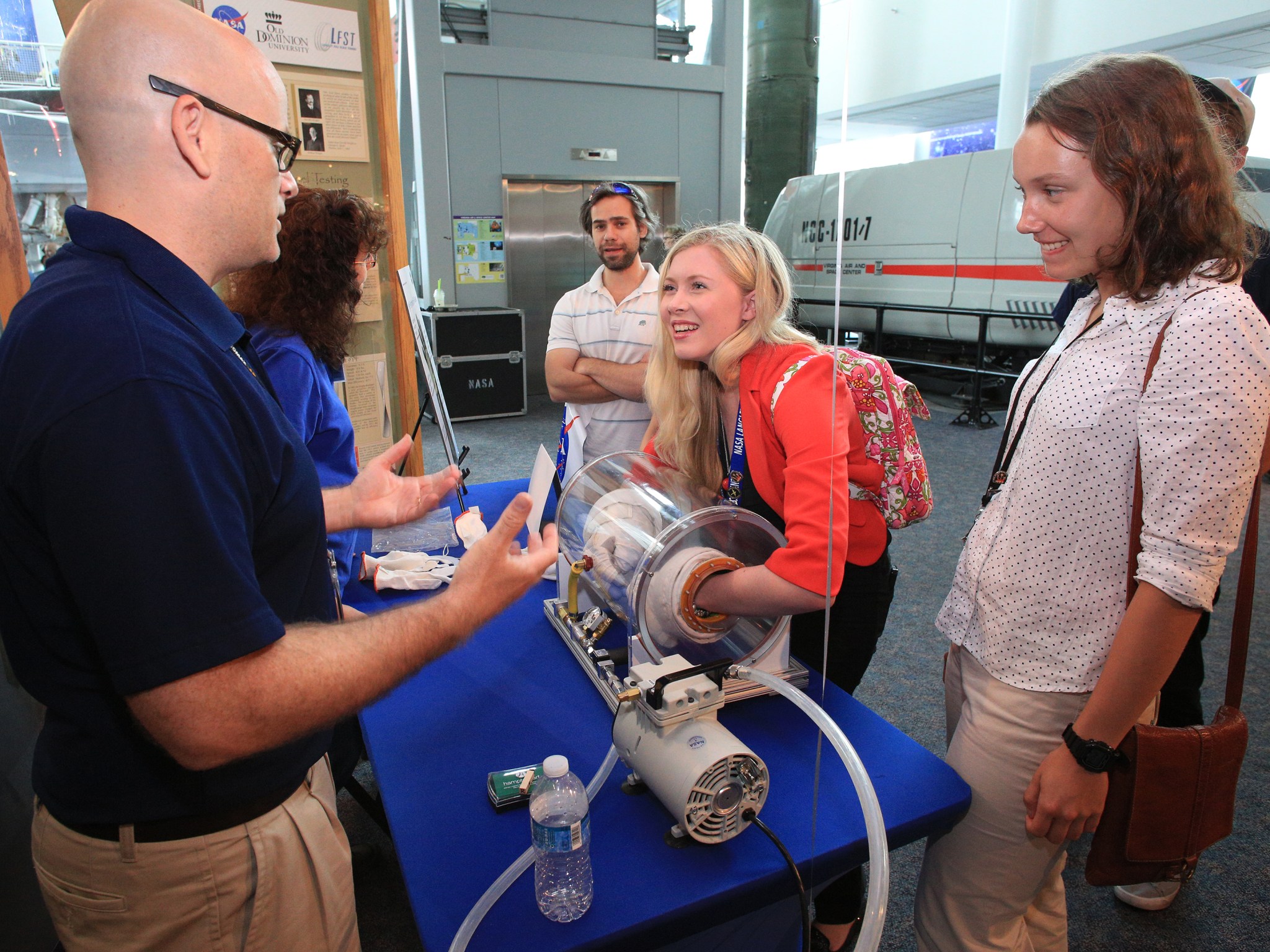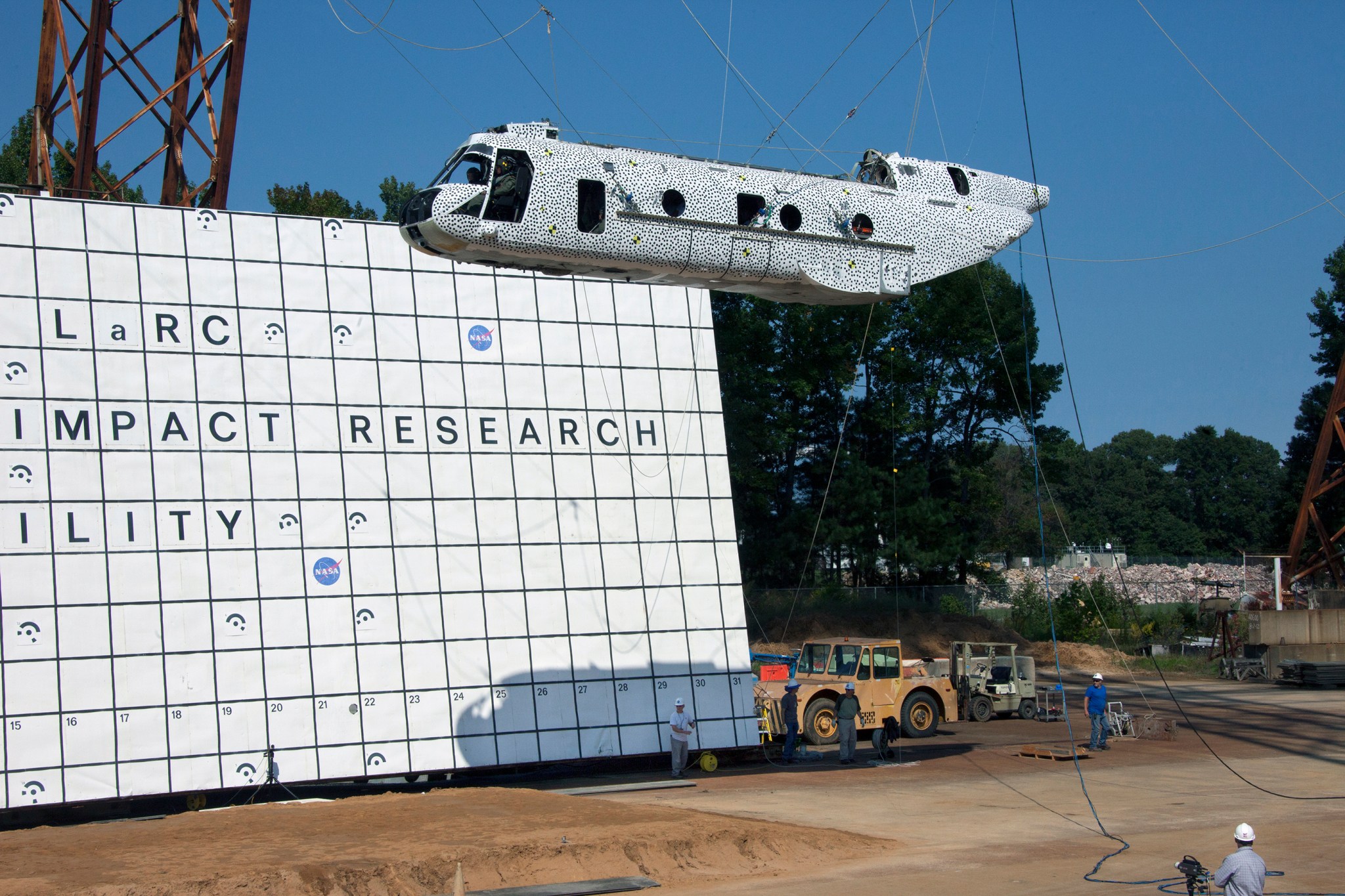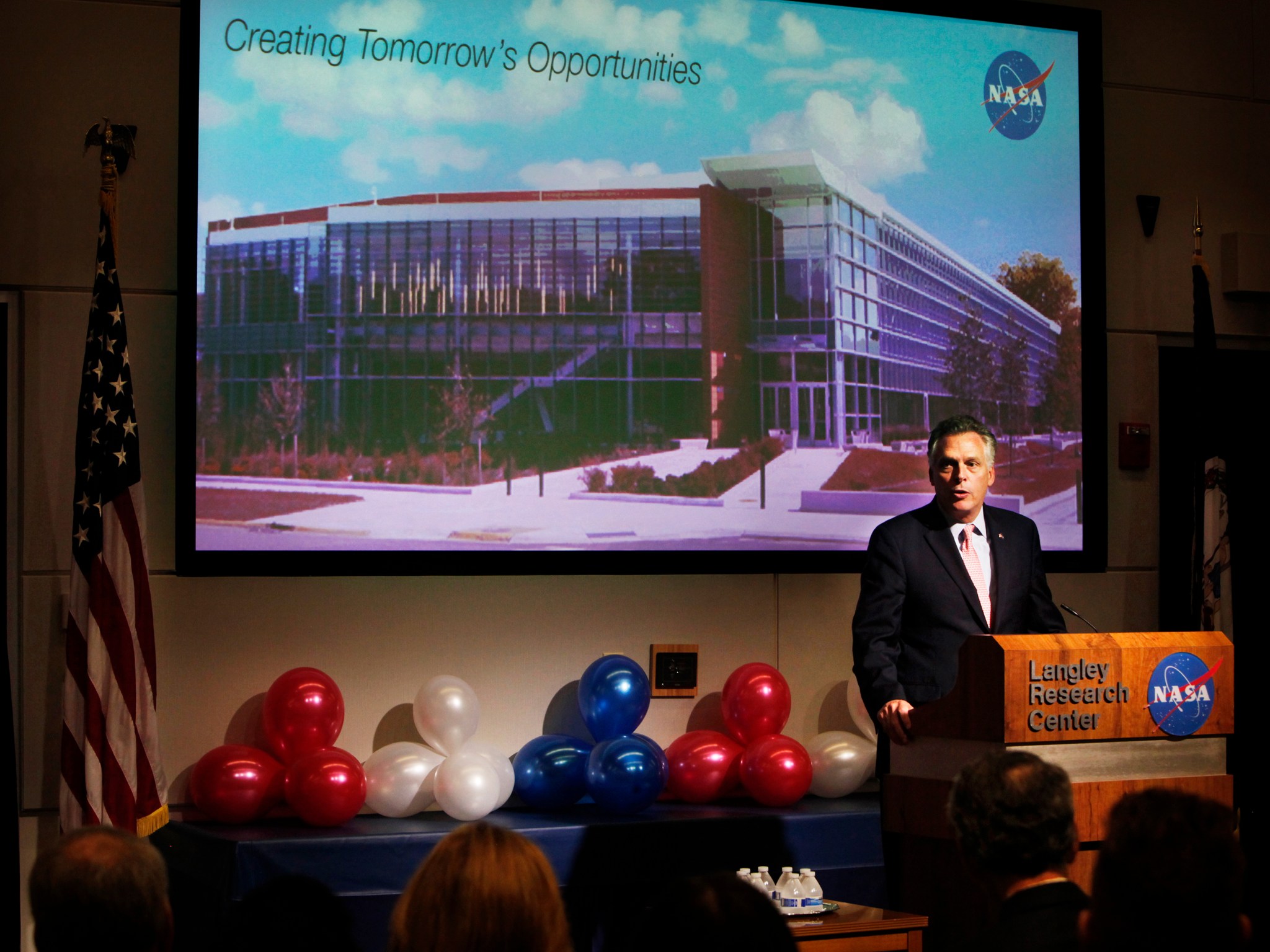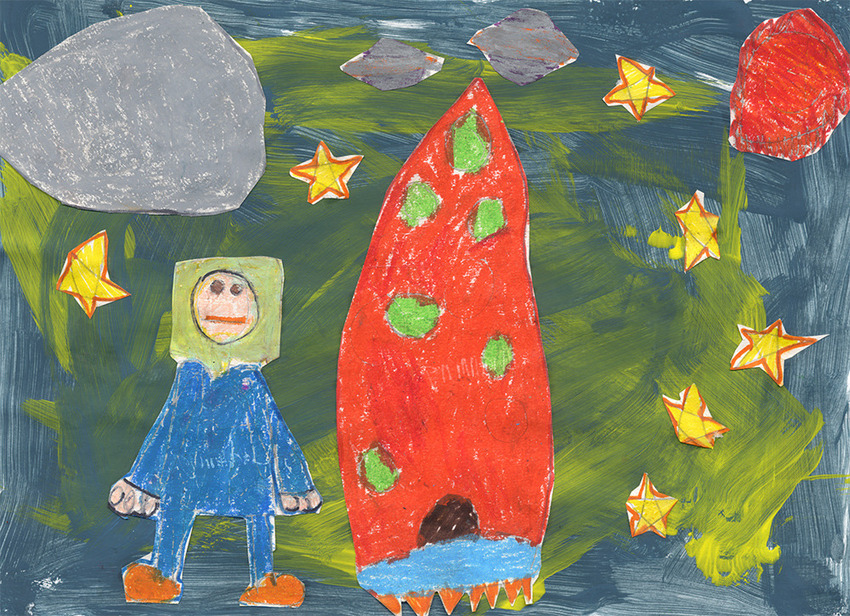A successful space launch, a robotic arm, a plume of volcanic ash and a weird looking airplane called the Super Guppy — it’s been an exciting year at NASA’s Langley Research Center. It would be impossible list all the cool science, technology and research we’ve been involved in over the last 12 months, but here are a few of the highlights.
A New Era of Space Exploration
The successful launch, reentry and splashdown of the Orion spacecraft on Dec. 5 marked a big leap forward for the nation’s space program, and NASA Langley had a major hand in making it happen. Researchers here led the development of Orion’s Launch Abort System and oversaw creation of the heat shield. Wind tunnel work, structural impact testing and refinements to Orion’s recovery procedures were all handled by Langley. And Langley’s SCIFLI (Scientifically Calibrated In-Flight Imagery) team captured thermal snapshots of Orion as it blazed back into the atmosphere — but the work didn’t end there. In fact, right here at Langley, we’re conducting wind tunnel tests of the Space Launch System, which will put Orion on a course around the moon on its next mission in 2018.
Related Articles:
Langley Researchers Express Pride as Orion Rushes into Space and Back Again
NASA to Take Images of Orion Flight Test Splashdown
Langley’s Contributions to Orion
Orion Takes Big Step Before Moving to the Launch Pad
Space Launch System Booster Separation Testing Brings Confidence to First Flight
Reshaping the Future of Air Traffic
Researchers at NASA Langley’s Air Traffic Operations Lab are conducting critical experiments that will help move air traffic through the nation’s skies and airports more safely and efficiently. And this year, they moved into a top-of-the-line lab where they have more tools at their disposal than ever before. With air traffic expected to double in the next 20 years, that’s a good, good thing.
Related Article:
Air Traffic Operations Lab Answering Big Questions about the Future of Air Travel
More Field Campaigns than You Can Shake a Stick at
NASA Langley plays a critical role in NASA’s airborne science program and 2014 was a banner year for successful field campaigns. These were some of the highlights (click the links for more info). DISCOVER-AQ completed its final leg of observations in Colorado to improve the use of current and future satellites to diagnose ground-level conditions that influence air quality. ARISE completed science flights over the Arctic, collecting valuable data on Arctic atmospheric and surface conditions. SABOR advanced space-based capabilities for monitoring microscopic plants that form the base of the marine food chain. The BATAL campaign in Gadanki, India, gathered near-real-time data for 10 days to better understand the role of convection over the Indian sub-continent in the formation of the Asian Tropopause Aerosol Layer. KlAsh retrieved measurements of a volcanic plume originating from Indonesia’s Mount Kelud. The Polar Winds-Greenland airborne campaign flew Langley’s Doppler Aerosol WiNd (DAWN) lidar system on the UC-12B aircraft out of Greenland to prepare for future ESA space missions and to investigate the utility of DAWN wind profile measurements for Arctic warming and ice loss science contributions. LARGE completed three science flights into Hurricane Edouard aboard the NOAA WP-3D aircraft based in Bermuda to better understand the spatial distribution of particles in hurricane regions. The ASCENDS CarbonHawk Experiment Simulator (ACES), a tool for measuring carbon dioxide in the atmosphere, completed its first series of test flights on July 16. And last but certainly not least, the ACCESS II Field Experiment completed flight tests over Palmdale, California, to gather critical data to aid in the development of cleaner aircraft fuels.
More than Meets the Eye
It may look like it belongs in a Transformers movie, but ISAAC isn’t something Hollywood’s razzle-dazzle special effects experts dreamed up. It’s a high-tech robotic arm that can transform epoxy and fibers into aerospace structures and parts. ISAAC arrived at NASA Langley in November and researchers plan to have it up, running and cranking things out by early 2015.
Related Article:
NASA Installs Giant Composite Material Research Robot
From Our Inventors to the World
While we’re figuring out how to put people on Mars or making airplanes more environmentally friendly, we invent a lot of cool stuff. And sometimes that stuff has applications that can be beneficial to the world at large. This year, researchers Qamar Shams and Allan Zuckerwar, who recently passed away, won NASA’s Commercial Invention of the Year award for their Extreme Low Frequency Acoustic Measurement System. It hears sounds inaudible to the human ear and has several potential applications — including the ability to detect tornadoes before they show up on radar or volcanoes before they erupt. We also formed a partnership with Edison Nation, an online service, to crowdsource potential applications for MindShift, a technology that monitors a user’s physiological signals to mimic reality. Langley researchers Alan Pope and Chad Stephens originally invented the technology so pilots and air traffic controllers could use brainwave activity to maintain safer flight during autopilot and other automated aircraft functions.
Related Articles:
NASA Langley Researchers Nab Invention of the Year for Infrasound Detection System
NASA Partners with Edison Nation to Promote Technologies
Ideas Rolling in for Edison Nation’s NASA Challenge
Special Super Guppy Delivery
One of NASA’s weirdest, coolest looking airplanes, the Super Guppy, delivered a very special piece of cargo to NASA Langley this month. Onboard the bulbous aircraft was something called the Pultruded Rod Stitched Efficient Unitized Structure, or PRSEUS, a massive slice of a futuristic airplane design that’s made of a low-weight, damage-tolerant, stitched composite material. Boeing Research & Technology built the test article for NASA’s Environmentally Responsible Aviation project. Researchers here will push it to its limits by bending, pressurizing and eventually breaking it.
Related Article:
NASA Super Guppy Plane Delivers Large Composite Structure for Testing
Technology on Display
We like to give everyone a glimpse of what we’re working on from time to time, but rarely do we get to do that on the same scale as we did in July with Technology Day. The event, which took place at the Virginia Air & Space Center, included more than two-dozen exhibits on everything from inflatable heat shields to Robonauts to Earth-observing satellites. It was a great opportunity for us to show the people of Hampton Roads where some of their federal tax money is going, but also an exciting, interactive way for us to inspire young minds.
Related Article:
Technology Day Puts NASA Langley’s Work on Display for All to See
Another Smash Hit
We like to smash things here — for scientific reasons, of course. In October, we dropped a 45-foot-long former Marine helicopter — and the 13 crash test dummies onboard — 30 feet into a bed of dirt at our Landing and Impact Research Facility. We’ll use the results of the crash experiment to help improve rotorcraft performance and efficiency, and also to create more complete computer models to help design better and safer helicopters.
Related Article:
NASA Helicopter Drop Test a Smashing Success
Dignitaries Celebrate NASA Langley’s Push to Modernize Facilities
Virginia Gov. Terry McAuliffe, U.S. Reps. Scott Rigell and Bobby Scott and a host of other dignitaries converged on NASA’s Langley Research Center Oct. 17 to mark the ceremonial opening of the Integrated Engineering Services Building. The 138,000-square-foot structure, the second built as part of Langley’s 20-year revitalization plan, contains sleek, modern conference and training facilities as well as specially tailored spaces for engineering collaboration and monitoring flight missions. Designed for energy efficiency, it’s expected to consume half as much power as older buildings its size. Groundbreaking for our next building, the Computational Research Facility, is expected to happen soon.
Related Article:
Officials Cut Ribbon on IESB at NASA Langley
Youth Art from Langley Contest Creates Internet Buzz
Space-inspired works by Hampton Roads youth artists were celebrated across the Internet in 2014, thanks to a NASA Langley art contest. In February and March, children and young adults entered some 334 paintings and drawings on the theme “the future is now.” Students’ colorful, creative images of spacecraft, planets and astronauts touched off a burst of online conversation and acclaim. Internet sites including the Huffington Post, Gizmodo and Smithsonian.com’s Smartnews blog linked to an online gallery of entries. “In a word, their submissions are adorable,” wrote Dennis Green of Mashable.
Related Articles:
Visions of Future Seen in 2014 Student Art Contest Winners
NASA Langley Art Contest Winners Honored at the Virginia Air & Space Center





























